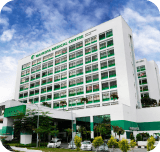Sports Injuries
All about meniscus injury
Find out how a common knee injury can impact your life, symptoms to look out for, and the necessary treatment.
24 April 2020
Share

In younger patients, the meniscus is usually damaged in sporting injuries during twisting motion of the knee. For the elderly, the meniscus is usually torn as part of the aging process.
The meniscus usually gets very poor blood supply. Without the appropriate nutrients in the blood, the meniscus may not heal quickly.
Symptoms to look out for:
A common symptom most patients experience is knee pain and swelling. The swelling of the involved knee joint develops over a few hours. The pain may be localised to the medial (inside) or lateral (outside) of the knee, depending on the site of the tear. The patient may also develop mechanical symptoms.
Symptoms include:
- Medial or lateral knee pain
- Delayed swelling
- Clicking sensation
- Locking of the knee
Locking of the knee happens when a piece of the torn meniscus gets caught in between the femur (thigh bone) and tibia (calf bone). The patient will not be able to fully straighten the knee. Sometimes, the patient may need to do certain maneuvers to unlock the knee.
Locking of the knee should be treated urgently.
Investigating a meniscus injury
Two methods of investigation for meniscus injury are X-rays and magnetic resonance imaging (MRI).
X-ray of the knee is quite normal in patients with meniscus injury. On the other hand, MRI would usually be done to confirm a clinical diagnosis of meniscus injury. Plus, it helps the doctor to look out for other injuries such as cartilage injury and ligament injury.
MRI is safe and radiation-free with a very high detection rate.
Treating meniscus injury
All patients with meniscus injury should undergo a course of physiotherapy, rest, and anti-inflammatory medications.
Patients with locking of the knee are strongly recommended for arthroscopic (keyhole) knee surgery. Young patients with clicking or persistent pain should also undergo keyhole knee surgery. Associated injuries such as ligament injury or cartilage damage can be treated with the same surgery.
The meniscus can be repaired or partially debrided (trimmed off). The surgical decision depends on the quality of the torn meniscus and the location of the tear.
The assigned orthopaedic surgeon will discuss in detail the pros and cons of every option available. The options would be performed by knee arthroscopy techniques (keyhole surgery).
The surgery will be performed under general or regional anesthesia. It will take about 45 min to one hour. Patients can be discharged on the same day or be warded overnight.
Depending on the injury, patients may be on crutches for a time. After surgery, patients will need physiotherapy for about 3 to 6 months. The assigned surgeon will review your condition regularly after surgery to make sure your recovery is on track.



